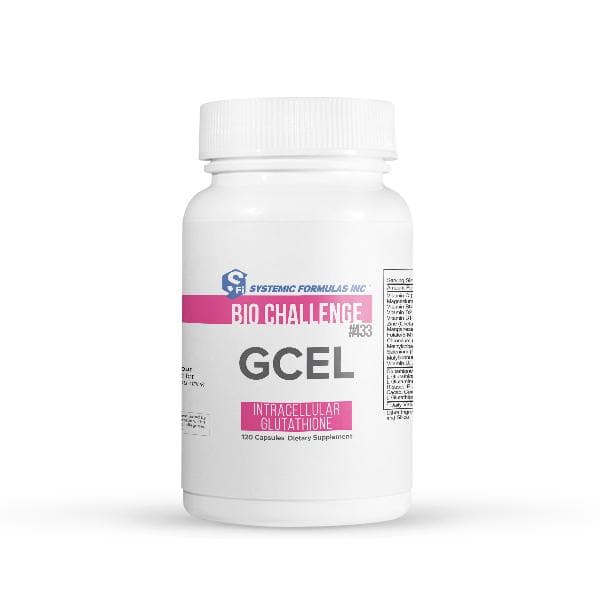Spring Cleaning 101: Removing Toxins From Your Body and Home

Share
Every day, we are bombarded with toxins. This article discusses the most common sources of toxins in the home and the top ways to remove or eliminate them. In addition, we list some of the most powerful all-natural detox supplements for the body.
Top Sources of Toxins in the Home
Harmful toxins can be found throughout our homes. Here are some of the most common sources and ways to eliminate them.
1. Cookware
Today, the most popular cookware we use to prepare food contains harmful toxins. What makes them dangerous is the toxins could leech onto the food while being used. Here are the most problematic sources of cookware toxins:
- Aluminum: Aluminum is the most widely distributed metal in the environment. Low amounts can be found in cookware but in many other items, including personal products, food, cement, detergents, printing ink, and vaccines. Aluminum can also be airborne from dust, soil, and rocks.
- While exposure is typically considered harmless, the cumulative effects of aluminum exposure could impact the body over time. Preliminary studies indicate long-term exposure to aluminum can harm cardiovascular, skeletal, gastrointestinal, and reproductive systems.[1]
- Teflon-coated (nonstick). Teflon is an artificial chemical that is quite popular because it is easy to clean. Unfortunately, the non-stick cookware is easily scratched, releasing toxic chemicals into the food.
- Copper. Also known as Copperiedus, copper toxicity can occur when acidic foods cooked in uncoated copper cookware are consumed. Potential signs of copper toxicity may include abdominal pain. Severe thirst, diarrhea, vomiting, and other gastrointestinal issues.[2]
Safer cookware options are available. Instead of using the cookware described previously, opt for these instead:
- Cast iron cookware
- Glass cookware
- Stone cookware
- Ceramic cookware
- Stainless steel cookware
2. Food Storage Containers
Many food containers are made of plastic, but the chemicals in that plastic (such as phthalates) can leach into the foods and drinks they contain. There are three primary causes for this to occur:
- Plastics that wear out over time
- Food that is heated (includes plastic water bottles in direct sunlight
- Oily foods
Storage container tips:
- Switch to glass and stainless steal for food containers
- Opt for ceramic containers for mixing
- Don’t put plastics in the microwave or dishwasher
3. Personal Care Products
Personal care products are consumer products that are applied externally to various parts of the body. Top personal care products include the following:
- Cleansing products (hand soaps, shower gels, body lotions, facial cleansers, etc.)
- Hair care products (shampoos, hair gel, hair conditioners, etc.)
- Eye care products (eye drops, contact lens solutions, eye creams, etc.)
- Anal hygiene products (toilet paper, wet wipes, etc.)
- Oral products (toothpaste, toothbrush, mouthwash, etc.)
- Hair removal products (shaving creams, gels, razors, waxing kits, etc.)
- Skincare products (baby powders, body lotions, hand creams, etc.)
- Nail care products (cuticle creams, nail files, nail cutters)
There are a wide variety of products under the personal care products window. It’s critical to know what these products are and their potential dangers to decrease their usage or eliminate them altogether. Here are a few ingredients in personal care products believed to be hazardous to a person’s health:
|
Ingredient |
Products |
Uses |
Potential Dangers |
|
Parabens |
|
|
|
|
Synthetic fragrances |
|
|
|
|
Phthalates |
|
|
|
|
SLS Sodium laureth sulfate (SLS) and sodium lauryl sulfoacetate (SLSA) |
|
|
|
|
Polysorbate 80 |
|
|
|
|
Artificial Colors/Dyes |
|
|
|
Note:Johnson and Johnson (JNJ) has faced lawsuits over its talcum baby powder and other talc-based products. Talc is a popular ingredient in many personal care products, including soap, makeup, powders, and deodorant. In 2023, 42 states launched a joint investigation into its marketing of talc products and claimed the company misled patients about the safety of its talc products. The company will pay $700 million to settle the probe.
4. Laundry Room
Conventional laundry products, including fabric softeners, dryer sheets, and laundry detergents, consist of artificial fragrances, artificial colors, and chlorine. Laundry detergent capsules (pods and tablets) are among the most common causes of toxin exposure to children five years and younger. (Their small, bite-sized appearance and bright colors are often mistaken for candy.)
Exposure to laundry detergent typically occurs in one of the following ways:[3]
- Skin exposure: Ingredients in laundry detergent could damage skin by breaking down proteins. Rash, skin irritation, and chemical burns could occur due to prolonged contact.
- Ingestion: Vomiting, coughing, nausea, rash, and drowsiness are the most common reactions if swallowed.
- Eye exposure: Ocular exposure could cause severe eye pain and conjunctivitis.
Reducing Laundry Room Toxin Exposure
When shopping for toxin-free laundry detergent, here are key items to consider:
- Phosphate free
- Plant-based ingredients
- Biodegradable laundry detergent formula
- No chlorine bleach
- Unscented or natural fragrances
- No artificial colors
Homemade Laundry Detergent Recipe
Here is a toxin-free laundry recipe to try:
- Liquid castile soap - 2 ¼ cups
- White distilled vinegar - ¼ cup
- Glycerin – 1 tablespoon
- Water – ¾ cup
- Essential oils – 10-15 drops (optional)
How to use:
- Add all ingredients to a container or squirt bottle
- Shake before adding to washing load
- Add ¼ cup for an average load
- Add ½ cup for larger or heavily soiled loads
5. Cleaning Products
The products we use to keep our homes clean could harm our health. According to the American Lung Association, many household cleaning products contain volatile organic compounds (VOCs) that could cause many health problems, including headaches and irritation of the eyes or throat. Studies indicate VOCs could be harmful to the kidneys, liver, nasal cavity, sinus, and bile duct over a long period.[4]
Top cleaning supplies that might contain VOCs include the following:
- Oven cleaners
- Furniture polish
- Dry cleaning chemicals
- Chlorine bleach
- Air fresheners
- Aerosol sprays
- Rug and upholstery cleaners
The following ingredients are toxin-free and can be used to make homemade cleaning products:
- Baking soda
- White vinegar
- Castile liquid soap
- Borax
- Essential oils
A simple all-purpose cleaner recipe consists of 2 cups of white cleaner and 2 cups of water. Click HERE for more green cleaning recipes.
6. Furniture and Furnishings
The furniture in our homes can contain a dangerous variety of toxins:
- Formaldehyde. A colorless chemical with a strong odor, formaldehyde, is found in glues, adhesives, plywood, fabrics, and pressed-wood products. The Environmental Protection Agency classified formaldehyde as a potential carcinogen under unusually high or prolonged exposure.
- Acetaldehyde. This chemical is often used in perfumes to create a new car or furniture smell. The EPA cautions that prolonged-term exposure can irritate the eyes, skin, and respiratory tract. Preliminary studies indicate it is a possible human carcinogen.
- Hexabromocyclododecane. Also known as HBCD, this chemical is a type of flame retardant used to decrease the risk of fire spreading if your sofa or other pieces of furniture catch on fire. Per the EPA, HBCD is believed to increase the risk of developmental, neurological, and reproductive effects.
Removing Toxins From the Home
In addition to decreasing the use of toxic products, here are some of the most effective ways to remove toxins from the home:
- Houseplants. Houseplants help to absorb toxic chemicals in the air. Philodendrons, English Ivy, Chrysanthemums, aloe vera, and Chinese Palm are known for their air-purifying qualities.
- Open windows. Thanks to these toxins, indoor air can be more polluted than outdoor air, with indoor VOC levels up to 10 times higher indoors than outdoors.[5] Simply opening windows allows fresh air into the home.
- Baking soda. Baking soda can be used as a deodorizer. When sprinkled on carpet or furniture, it can trap harmful gasses and remove them when vacuumed.
Top All-Natural Detox Products
As we remove toxins from our homes, it’s also important to remove them from our bodies. Here are 3 of the most effective all-natural detox supplements today.
REL Super Chlorella
Chlorella is a type of algae that can bind to heavy metals in the body and remove them.REL Super Chlorella contains pure chlorella and aids in the detox process by providing the following benefits:
- Supports detoxification on a molecular level
- Assists in stabilizing the body during cleansing programs
- It helps support and maintain a healthy immune system
- Supports heavy metal detoxification
- Good source of protein
GCEL - Intracellular Glutathione
Glutathione is widely regarded as one of the most powerful antioxidants in the human body. It is also involved in detoxifying many harmful compounds that enter the body.
GCEL - Intracellular Glutathione supports cell health by neutralizing free radicals, preventing cell damage. Key benefits of GCEL – Intracellular Glutathione include the following: 
- Maintains healthy glutathione levels in the body
- Attacks and neutralizes free radicals in the body
- 5000 times stronger than vitamin C
- Rich in vitamin B, which assists in detoxification
K – Kidney
The kidneys play a key role in filtering out the toxins our bodies encounter daily. Important kidney functions include filtering waste from the blood, activating vitamin D in the body, supporting the liver’s glycogen function, and maintaining proper blood pH.
K - Kidney helps support kidney health by stabilizing kidney functions. Additional benefits include the following: 
- Prepares kidneys for a proper detox
- It contains gelatin, which provides key amino acids that build and support kidney tissues
- Strengthens kidney function
- Builds kidney tissue
- It contains juniper berry, which supports various kidney functions, including self-purification
- Supports proper drainage during the detox process
Summary
Many of the daily dangerous toxins can be found in our homes. We must know these dangers and how they can affect our health. We are one step closer to maintaining good health by identifying the source and removing them.
What are the primary sources of toxins in your home? Leave a comment below and tips on how you remove them.
References:
- Ikechukwu Onyebuchi Igbokwe, Ephraim Igwenagu, Nanacha Afifi Igbokwe. Aluminum toxicosis: a review of toxic actions and effects. Interdiscip Toxicol. 2019 Oct; 12(2): 45–70. Published online 2020 Feb 20. doi: 10.2478/intox-2019-0007. [PMID: 32206026].https://www.ncbi.nlm.nih.gov/pmc/articles/PMC7071840/
- Amor Royer; Tariq Sharman. Copper Toxicity – StatPearls. [Updated 2023 Mar 27]. In: StatPearls [Internet]. Treasure Island (FL): StatPearls Publishing; 2024 Jan-. Available from:https://www.ncbi.nlm.nih.gov/books/NBK557456/
- Asha G. Bonney, Suzan Mazor, MD, and Ran D. Goldman, MD FRCPC. Laundry detergent capsules and pediatric poisoning. Can Fam Physician v.59(12); 2013 Dec PMC3860925. [PMID: 24336541],https://www.ncbi.nlm.nih.gov/pmc/articles/PMC3860925/
- Wen-Tien Tsai. An overview of health hazards of volatile organic compounds regulated as indoor air pollutants. Rev Environ Health. 2019 Mar 26;34(1):81-89. doi: 10.1515/reveh-2018-0046.[PMID: 30854833].https://pubmed.ncbi.nlm.nih.gov/30854833/
- ran VV, Park D, Lee YC. Indoor Air Pollution, Related Human Diseases, and Recent Trends in the Control and Improvement of Indoor Air Quality. Int J Environ Res Public Health. 2020 Apr 23;17(8):2927. doi: 10.3390/ijerph17082927. PMID: 32340311; [PMCID: PMC7215772].https://www.ncbi.nlm.nih.gov/pmc/articles/PMC7215772/
